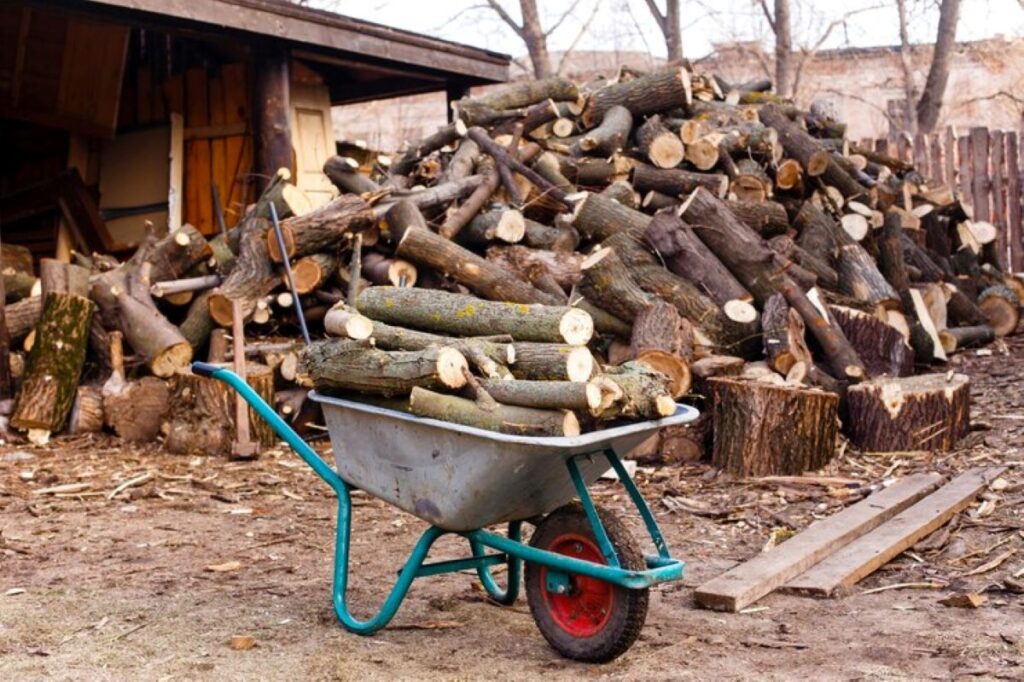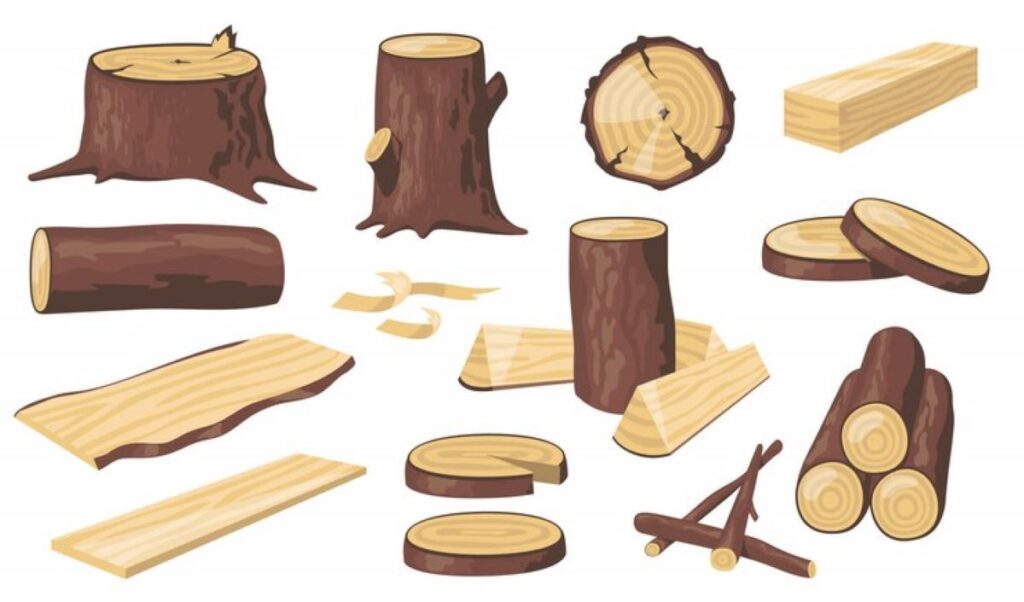Properly storing firewood is essential for ensuring it remains dry and ready for use, especially during the colder months. Whether you rely on firewood for heating your home, cooking, or creating a cosy atmosphere, knowing how to store it effectively can make all the difference. This article provides practical tips for storing firewood, focusing on techniques that keep it dry and accessible when needed.
Understanding the Importance of Dry Firewood
Before delving into storage methods, it is crucial to understand why dry firewood is so important. When wood is wet or green, it not only burns inefficiently but also produces more smoke and creosote, which can lead to chimney fires. Dry wood, on the other hand, ignites easily, burns hotter, and produces less smoke. This efficiency not only enhances the warmth provided by your fire but also contributes to a cleaner environment, as reduced smoke means fewer pollutants released into the atmosphere. Furthermore, using dry firewood can significantly lower your heating bills, as you will require less wood to achieve the same level of heat compared to burning wet wood.
What is Seasoned Firewood?
Seasoned cheap firewood is wood that has been dried to a moisture content of around 20% or less. This drying process can take anywhere from six months to two years, depending on the type of wood and the conditions in which it is stored. Proper seasoning allows the wood to burn more efficiently, providing more heat and less smoke. The type of wood also plays a critical role; hardwoods like oak and hickory generally take longer to season than softwoods like pine or spruce, but they also burn longer and produce more heat when fully seasoned. Understanding the characteristics of different woods can help you make informed choices for your firewood supply.
Signs of Dry Firewood
There are several indicators that firewood is adequately seasoned. The bark may start to separate from the wood, and the ends of the logs may show cracks. When two pieces of seasoned wood are struck together, they produce a sharp, ringing sound rather than a dull thud. Additionally, dry wood is lighter than wet wood, making it easier to handle. Another sign of well-seasoned wood is its colour; seasoned wood often appears greyish or faded compared to the rich, deep tones of freshly cut logs. It is also worth noting that seasoned wood tends to have a pleasant, earthy aroma, whereas green wood can smell musty or sour. Recognising these signs can ensure that you select the best firewood for your needs, ultimately leading to a more enjoyable and efficient burning experience.
Choosing the Right Location for Storage
The location where firewood is stored plays a significant role in its ability to remain dry. Selecting an appropriate spot can protect the wood from moisture and promote airflow, which is essential for drying.
Outdoor Storage Options
For those who prefer to store firewood outdoors, choosing a sheltered area is vital. A covered porch, shed, or wood rack can provide protection from rain and snow. It is advisable to elevate the wood off the ground using pallets or a similar structure to prevent moisture from seeping in from the soil. Additionally, positioning the wood stack in a location that receives ample sunlight can further aid in the drying process. Sunlight not only helps to evaporate moisture but also discourages the growth of mould and fungi, which can compromise the integrity of the wood. It is also beneficial to arrange the wood in a way that allows for air circulation; stacking the logs in a crisscross pattern can facilitate this airflow, ensuring that all pieces dry evenly.
Indoor Storage Considerations
Storing firewood indoors can be convenient, especially during winter months. However, it is essential to ensure that the wood is dry before bringing it inside. A small, well-ventilated area, such as a garage or a dedicated firewood storage bin, works best. Avoid storing wood directly next to heating sources, as this can increase the risk of fire. Furthermore, it is wise to limit the amount of firewood brought indoors at one time; keeping only a few days’ worth of logs can help maintain a manageable environment and reduce the chances of insect infestations. Regularly inspecting the wood for signs of pests or decay is also advisable, as this can prevent any unwanted surprises when you reach for a log during a chilly evening. Incorporating a small fan or dehumidifier in the storage area can enhance air circulation and keep the humidity levels in check, ensuring your firewood remains in optimal condition for use.
Proper Stacking Techniques
How firewood is stacked can significantly impact its drying process. Proper stacking allows for better airflow, which helps to keep the wood dry and ready for use.
Stacking Firewood for Airflow
When stacking firewood, it is essential to create a structure that promotes airflow. A crisscross or log cabin style can help achieve this. This method involves stacking the wood in alternating layers, which allows air to circulate around the logs. Avoid stacking wood too tightly, as this can trap moisture and hinder drying.
Covering the Stacked Wood
While it is important to keep firewood dry, it is equally crucial to allow it to breathe. Cover the top of the stacked wood with a tarp or a dedicated wood cover to protect it from rain and snow. However, ensure that the sides remain open to allow airflow. A well-ventilated cover will keep the wood dry while preventing moisture buildup. You may like to visit https://betterlivingpatios.com/choosing-the-right-tree-lopping-service-in-the-blue-mountains/ to get more about choosing the right rree lopping service in the Blue Mountains.

Maintaining Firewood Quality
Once firewood is stored, maintaining its quality is essential for ensuring it remains ready for use. Regular checks and care can prevent issues that may arise during storage.
Regular Inspections
Conducting regular inspections of stored firewood can help identify any potential problems early on. Look for signs of mould, insect infestations, or excessive moisture. If any logs appear damp or show signs of rot, it may be necessary to remove them from the stack to prevent contamination of the other wood.
Rotating Your Stock
To ensure that the oldest wood is used first, implement a rotation system. When adding new wood to the stack, place it at the back or bottom, allowing the older wood to be used first. This practice not only helps maintain the quality of the wood but also ensures that you are using seasoned wood whenever you need it.
Choosing the Right Firewood Type
The type of firewood selected can also influence how well it stores and burns. Different woods have varying moisture content and burning characteristics.
Hardwoods vs. Softwoods
Hardwoods, such as oak, hickory, and maple, are denser and typically provide a longer burn time and more heat. They also tend to have lower moisture content when seasoned properly. Softwoods, like pine and spruce, ignite easily and burn quickly but may produce more creosote. Understanding the characteristics of different wood types can help in selecting the best firewood for your needs. Visit https://era.dpi.qld.gov.au/id/eprint/2039/ to get more about healthy hardwoods.
Local Availability
Choosing locally sourced firewood can also be beneficial. Not only does it support local businesses, but it is often more suited to the local climate and conditions. Additionally, local wood is more likely to be seasoned correctly, reducing the risk of introducing pests or diseases from other regions.
Environmental Considerations
Storing firewood responsibly also involves considering the environmental impact. Sustainable practices can help preserve natural resources while ensuring a steady supply of firewood.
Harvesting Wood Responsibly
When collecting firewood from local sources, it is essential to do so responsibly. Avoid cutting down live trees, and instead, look for fallen branches or dead trees that can be safely removed without harming the ecosystem. This practice not only helps maintain the balance of local wildlife habitats but also reduces the risk of disease transmission to healthy trees.

Using Eco-Friendly Storage Solutions
Consider using eco-friendly materials for firewood storage, such as reclaimed wood or recycled metal for racks. These choices can reduce waste and promote sustainability. Additionally, using biodegradable covers for outdoor storage can help minimise environmental impact.
Conclusion
Storing firewood effectively is a vital aspect of ensuring it remains dry and ready for use. By understanding the importance of dry firewood, choosing the right storage location, employing proper stacking techniques, and maintaining the quality of the wood, one can enjoy the benefits of a warm and inviting fire throughout the colder months. Furthermore, being mindful of the environmental impact of firewood storage and sourcing can contribute to a more sustainable approach to heating and cooking. With these tips, firewood can be stored in a way that maximises efficiency and minimises waste, ensuring a reliable source of warmth and comfort.


Comments are closed